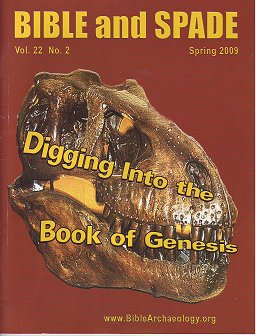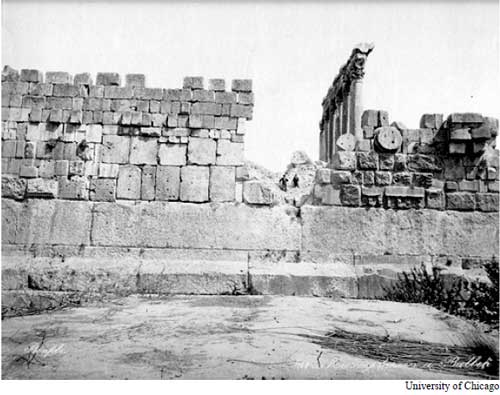Is there Archaeological Evidence for the Tower of Babel?
 |
This article was first published in the Spring 2009 issue of Bible and Spade. It has been slightly updated in this web version. |
These megalithic ruins demand to be placed within an historical context, so Hancock’s attempt is worthwhile. But he is handicapped in seeking an explanation because he has apparently ruled out examining them within a biblical framework. Yet even those who know their Bibles well find these structures a challenge to understand. They cannot be placed into an antediluvian timeframe (that is, before the Flood), since beneath them lay fossil-bearing sedimentary rocks that had previously been deposited by the waters of Noah’s universal Flood. Finding a satisfying post-Flood solution has been difficult as well. These structures, though widely scattered around the world, share features that indicate a common cultural origin; for example, stones weighing many tons were used, having very tight joints and often cut in asymmetrical shapes, and requiring unknown technology to move and place them. Such a common cultural origin seems unlikely if one holds the view that mankind dispersed from Babel (Gn 11:1–9) into a world where the Americas were already widely separated from Eurasia, creating formidible barriers to the free interchange of culture and ideas. It is no wonder Hancock considers these megalithic ruins a great mystery. A similar mystery is the presence of pyramids in Mesoamerica, not unlike those in Egypt.
 The “Trilithon” in the Temple of Jupiter at Baalbek, Lebanon.
The “Trilithon” in the Temple of Jupiter at Baalbek, Lebanon.
These three stones are the largest building blocks in the world, each measuring 70 ft (21.5 m) long, 14 ft (4.3 m) high and 10 ft (3.1 m) thick, and weighing around 800 tons (726,000 kg). The shared knowledge, by people now widely separated, of how to move and precisely place such huge stones, is easier to understand if their geographical separation did not take place until after the Babel event.
IN SEARCH OF A BIBLICAL FRAMEWORK
Having a deep interest in the earliest chapters of Genesis, I decided to search for a way to place these structures, as well as a number of other “mysteries” I had read about, into a scriptural framework. My attention quickly focused on a detailed examination of Genesis 10:25, which states that in the days of Peleg, the earth was “divided.” Could this verse, I wondered, refer to a literal division of the land, rather than being the same as the Babel division of languages, as I had been taught? If so, I figured the passage could be a key to unlock part of the mystery that befuddled Hancock. I reasoned that if there had been a single continent for some time after the Flood, allowing easy movement and trade over vast distances prior to both the Babel disruption and the Ice Age—a Golden Age, as it were, free of the hazards of ocean travel or the obstruction of precipitous mountain ranges—then it would make much easier the spread of common culture that still recalled some of the pre-Flood methods of building passed down by Noah and his sons. Such knowledge seems required to explain the mystery of the megaliths…
READ FULL ARTICLE HERE…biblearchaeology.org)
Home | Caravan to Midnight (zutalk.com)





